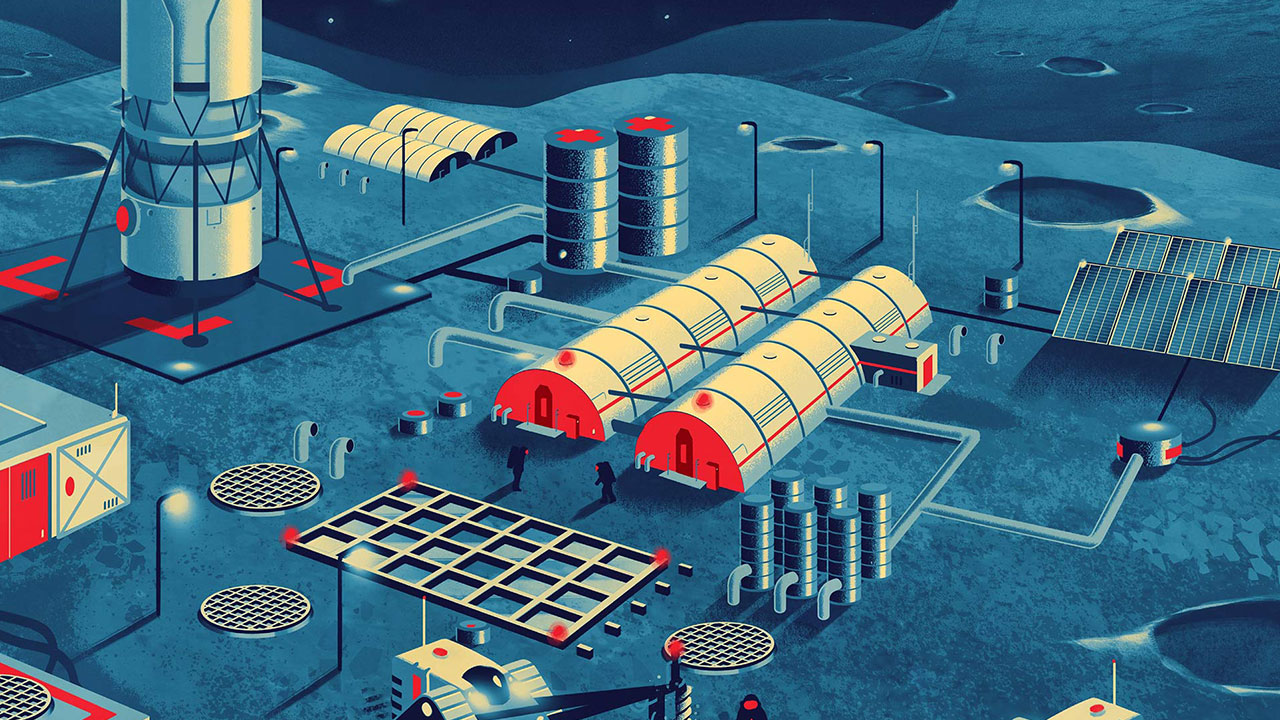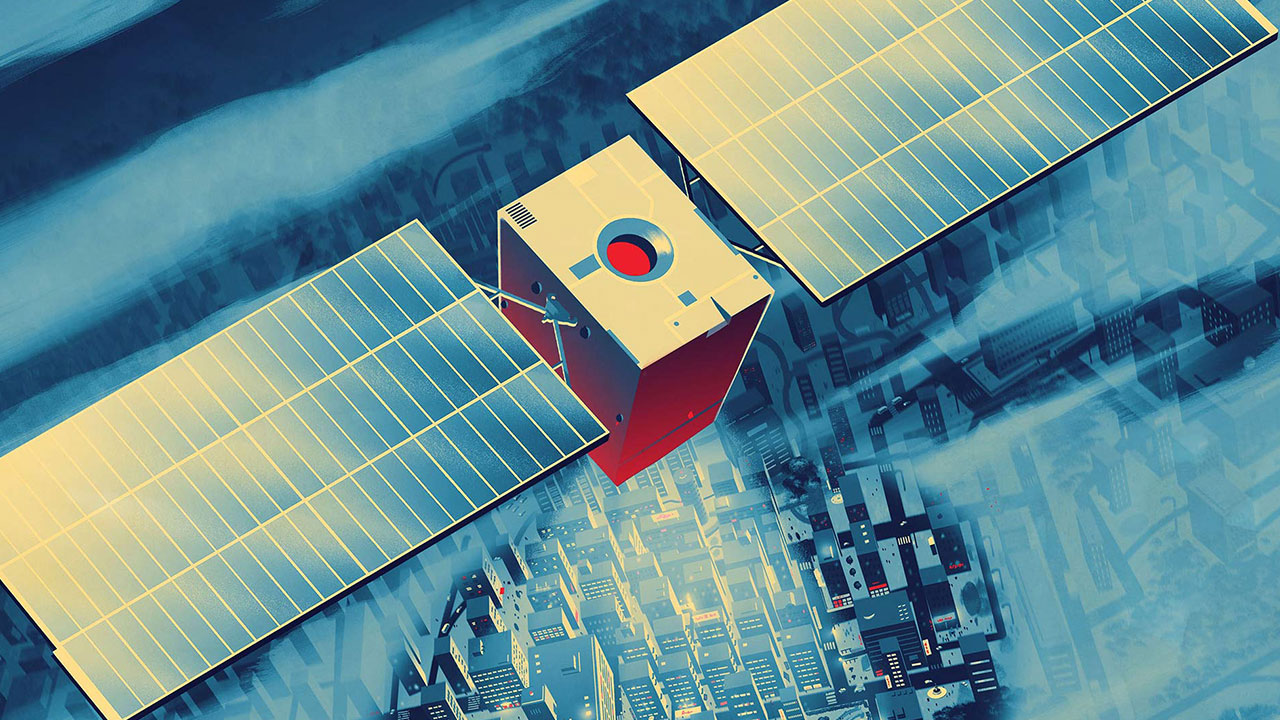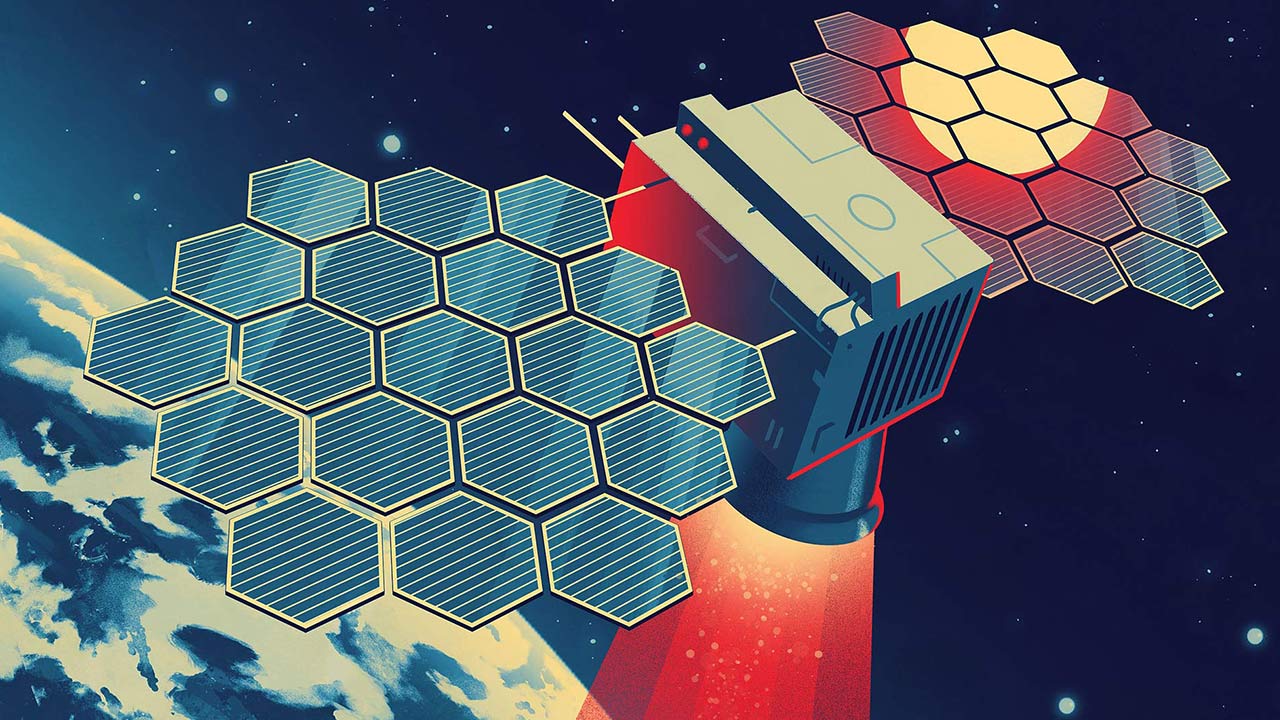The more we do up there, the more we have to clean up after ourselves. But how?
Outer space is very, very big. However, the region in which the commercial space sector typically operates—usually within a few hundred kilometers of the surface of the Earth—is relatively finite. And we’re filling it up at an increasingly rapid rate.
In 2017, the total number of satellites launched during a single year exceeded 300 for the first time. By 2020, humanity crossed over the threshold of 1,000 satellites and spacecraft in a single year for the first time. In the year 2023, alone, approximately 3,000 satellites will be launched into low-Earth orbit (LEO). If that sounds unsustainable, well, just wait. The majority of this growth in satellite launches has come from a single US space internet constellation. But this will soon be joined by further vast internet constellations from the US, Europe and China.
This dramatic growth in constellations follows more than six decades of launches by nations and private companies during which the upper stages of rockets were often left derelict in orbit. What’s more, anti-satellite weapons tests have showered debris into LEO, and older satellites have broken apart. There’s now more than 9,000 tonnes of man-made material whizzing around up there: About 25,000 objects larger than 10 cm, with a further 500,000 between 1 cm and 10 cm. And some of it is starting to collide, creating an even more congested environment. The hypothetical doomsday scenario, known as the Kessler effect, would be if space junk hits a critical mass leading to a runaway cycle of collisions that cause further collisions and renders LEO unusable.

“We really need to be paying closer and closer attention to how we're using the orbits where all our objects are, and open our minds to move away from a single use, throw-away culture in space towards a more circular economy,” says Dr. Clare Martin, Executive Vice President of Astroscale U.S., an on-orbit services company. “The things we’re doing terrestrially, we need to consider for orbit as well. Can we reuse things? Can we repurpose things? Can we recycle things? It’s a different level of thinking about how we use the environment today.”
Martin is a space scientist who has modeled and studied debris for more than two decades, and says she is most concerned about explosions in orbit, such as when nations shoot down old satellites to prove their offensive capabilities in space, or when two objects in orbit collide. Ground-based operators can track old rocket second stages or defunct satellites using optical telescopes or radars. But catastrophic events introduce an element of chaos.
“When there is an explosion or a collision, and you generate lots and lots of small pieces, that's a lot harder to track,” she says. “It takes something just the size of a pound coin, traveling at the speeds that you get in the orbital environment—around 28,000 km/h—to completely destroy another spacecraft. So it really is the small stuff that's the biggest threat. But that small stuff is generated because we leave the large stuff there, and we don't remove it responsibly.”
Astroscale, globally headquartered in Japan, was founded in 2013 to begin providing solutions to the space junk problem. Its next mission will launch in late 2023 to demonstrate the capability to rendezvous in orbit with a spent rocket upper stage. Astroscale's spacecraft, called ADRAS-J, will approach a derelict rocket stage and take photos to characterize it.
A separate Astroscale project offers insight into how the company is thinking about debris capture methods. The UK Space Agency has asked Astroscale to design a mission to remove two defunct satellites from orbit by 2026. Named COSMIC, Astroscale’s mission concept involves a spacecraft with a robotic arm grabbing one satellite, moving it into a disposal orbit and releasing it to burn up in the Earth’s atmosphere. The spacecraft would then go on to do the same with the second object.
Astroscale has raised more than USD380 million in funding, and belongs to an emerging sector of private companies focussed on the space debris problem, although the company has also diversified into other areas besides. A recent report forecasts that the “active debris removal” market will be worth USD600 million-USD1.5 billion globally by 2030. Astroscale’s method is one of a number of possible ways to deal with space junk. Startups and researchers have proposed a range of ideas including using a net to catch larger objects for controlled or uncontrolled re-entry, firing high-energy lasers either in space or from Earth to nudge objects in new directions, or deploying vacuum-cleaner style “sweepers” to capture space junk.
Tackling space debris is becoming an increasing priority for governments. Japan, the United Kingdom, and Europe are all funding missions to demonstrate “active debris removal” capability. Additionally, this year, the United States Senate advanced legislation that establishes the “intent to close commercial capability gaps and enable potential future remediation missions for such orbital debris”.
For the first time, then, Earth is taking baby steps to start mitigating the space junk issue. “We need to broaden our mindset as an industry and think about how we are using space,” says Martin. “I see it being a very, very vibrant economy going forward. The change, just in my career, has been phenomenal. From when I first started working I had a choice of maybe three companies to work for in the UK—now there are many, and I see that trajectory continuing. It is touted to be a trillion-dollar economy in the next decade. To truly get there, though, we actually have to embrace the logistics in orbit, and think and use space in a different way.”

Why ‘living off the land’ will be crucial to the dawning era of space exploration
As humanity ventures further into the solar system, harvesting resources in space for use off-world will be essential

Satellites can now show businesses what the human eye can’t see
Dark? Cloudy? Snowy? ‘Synthetic aperture radar’ satellites can peer through it all, and this new sector is booming

Are space-based solar farms the future of clean energy?
The idea is enjoying more attention than ever—but there are major challenges to overcome

How celestial ‘gas stations’ could unlock the space economy
Orbiting propellant depots are in development, and they could reinvent how we operate beyond Earth


